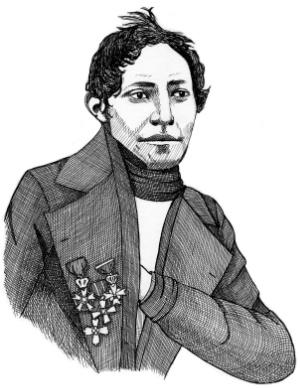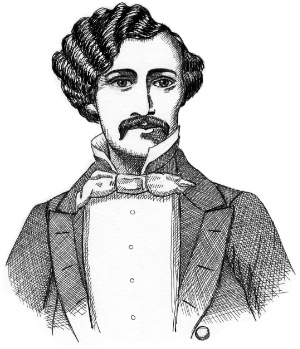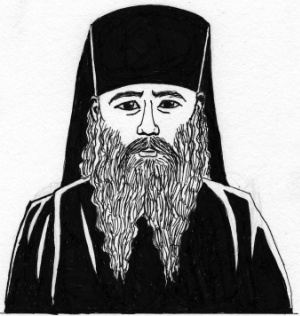
Figure 37. Occultist Manly P. Hall
How an Occultist Got Me Thinking
In April 1944 Manly P. Hall, an occultist who hobnobbed with world leaders, admitted to his followers that, (as he put it) “we” have been trying “for the last 100 years” to put out a Bible that was “reasonably correct” —according to this occultist. The purpose, he admitted, was to get people away from believing every “jot and tittle” of the King James Version!
Why get people away from believing only the King James?
That set me to thinking. 100 years before Hall’s admission was 1844. And the only Bible-related major event of 1844 was Tischendorf’s discovery of the supposedly “oldest-and-best” Greek Codex Sinaiticus in a desert monastery in the Egyptian peninsula.
So was there something about the Codex Sinaiticus that occultists of 100 years later would claim for themselves?

Figure 38. Sinaiticus “discoverer” Constantin Tischendorf, 1844
The Cast of Characters
I had thought the Sinaiticus was an old perversion of the scriptures but didn’t seriously consider that it could have been a modern fake, made to get people away from the King James, like Manly P. Hall wanted.
I had a number of questions that had to be answered first. Let me pick some important ones. The testimony about the Sinaiticus being a modern document hinges on three people and two places.
The first person was Constantine Simonides, a Greek calligrapher/copyist accused of being a forger.

Figure 39. Calligrapher/Copyist Constantine Simonides
The second person was allegedly Kallinikos, a monk (or a hieromonk, a priest who became a monk) who went back and forth between monasteries on Orthodox Church business.

Figure 40. Kallinikos may have looked something like this.
The third person was supposedly Benedict, another monk said to have been over a monastery on Mount Athos in Greece. He was also Simonides’ great-uncle.

Figure 41. Constantine Simonides’ great-uncle Benedict (artist’s impression).
These three, Simonides, Kallinikos and Benedict, are the central figures in this story. They gave me the information that began to call into question the age of the Sinaiticus.
The two places are two monasteries, one you already know and another less famous —almost a mystery.
You already know St. Catherine’s at the foot of the fake Mt. Sinai. (That’s why the document is named “Sinaiticus.”) The second is Panteleimon [pan te LAY moan] monastery on Mt. Athos in Greece.
Both of these monasteries were said to be under the patronage of the Tsar of Russia. In other words, he was the guy who shelled out the rubles to the monasteries under his care.
So now we have the characters and the settings. What are the facts?
Chapter 5: What are the Facts?
This string of people, places and events would have to be factual before we could even consider the idea that the Sinaiticus is not ancient but actually a modern fake.
The facts aren’t that hard to find —if we take the story apart one piece at a time.
In 1862 Constantin Tischendorf published a typeset copy of the Codex Sinaiticus. At this point he was receiving worldwide fame, telling his story you have now heard about the “discovery” of this “long lost text” of the Bible.
But in 1863, a literary journal in England featured a debate about all the details of a different story about the origin of the Sinaiticus. As I look at this again today, they raised some really good questions.
[End of Excerpt.]